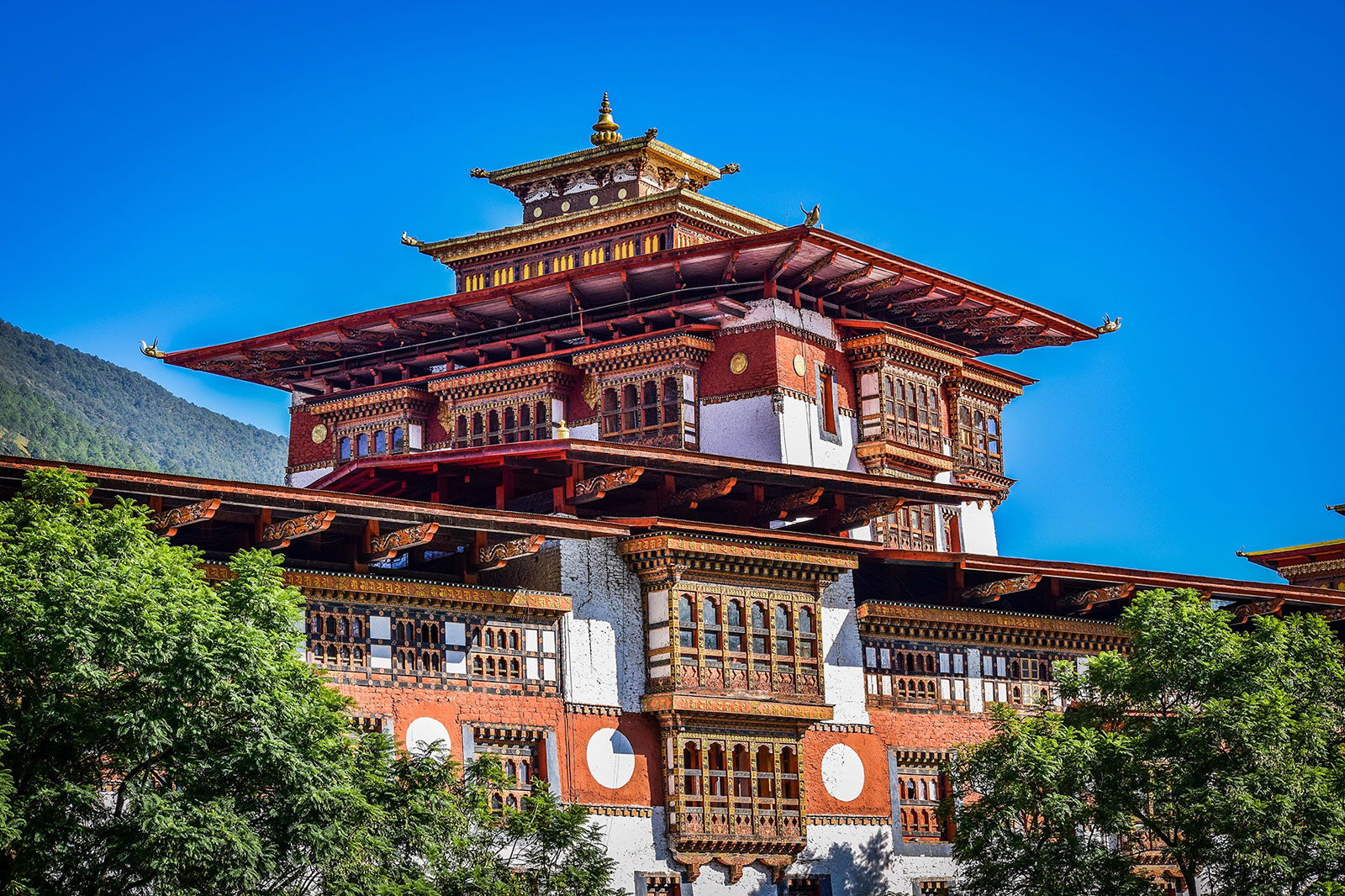The Bumthang owl trek combines the nature and culture of alpine environment. It is a three day trek through the village of Dhur. A trekker enjoys the natural scenic beauty and stunning views of Gangkar Puensum (the highest unclimbed peak in the world). In autumn, trekkers are cautioned of the Himalayan Black bears. In April-May, trekkers sight beautiful pheasants. The trek ends at the Tharpaling monastery where monks in red robes offer opportunity to briefly experience the monastic life. The trail ends at the junction of the Royal Route (trail used in the medieval days) at Kikila pass.
Main features of the trek: village at Dhur, healthy forests of blue pine, hemlock, fir, spruce, juniper, bamboo spices, rhododendrons, birch, maple, chestnut. April onto early June is the season for rhododendrons to flower all along the route. The trail offers views of high mountains and great number of bird and other wildlife. The Tharpaling and Zhambala monasteries offer great respite. For greater satisfaction, we advise you to combine this trek with one of Bumthang’s festivals. We recommend this trek two times a year, March-May and September-November.
Note: The trekking tour program does not include the total duration. Please select the trek of your choice and contact us. We will send you the program and duration. You can also combine the trek with the cultural tours. The trek which is less than five nights is the cultural trek that is done with the cultural tours.
Duration: 3 days
Highest Camp: 4000m
Standard: Easy to medium
Best Seasons: November, December, March, April, May & June
Start: Menchugang, Bumthang
Finish: Tharpaling monastery, Bumthang
Day 1
The trek starts from Menchugang to Dhur village at an elevation of 2900 meters. The inhabitants of the village are the Kheps and Brokpas (nomads). Villagers speak two different dialects, the usual Bumthang Kha and the Brokke (nomadic dialects). Near the river is a traditional water-driven flour mill used by the community of Dhur. Resuming the trek is the uphill climb through the blue pine forest towards the campsite at Schonath (3450m) in hemlock and juniper forest. The hauling of owls in the dead silent night is quite common, hence the name The Owl Trek.
Day 2
You will trek through the fresh forest of hemlock, fir, spruce and many species of rhododendron which are in full bloom during the months of April and May. The trekking also takes you through the bamboo vegetation, which is the main undergrowth in this forest.
After few hours, you will arrive at the Drangela Pass (3600m). Climbing up the Kitiphu ridge brings you to an altitude of about 3870m where you will camp for a night. From this point you can view snowcapped mountains and valleys. Gangkarpunsum (7541m), the highest unclimbed peak in the world can be viewed form the campsite.
Day 3
You will descend to the monasteries of Zambhalha, Chuedak and Tharpaling. Chuedak monastery has 100 Avoloketeshvaras in the form of Chukchizhey (eleven heads) where you may pray for the well-being of all sentient beings. You might even stop to quench your thirst with the Himalayan holy water around this place, which also cleanse your sins and purify your body and soul.
In the afternoon the trek will take you along the ridge of Kikila that has traditional trek route between Trongsa and Bumthang (the Royal Heritage Trail) through scenic hills and forests. Finally you will get the best view of Jakar Dzong and the trek ends in Chamkhar.









